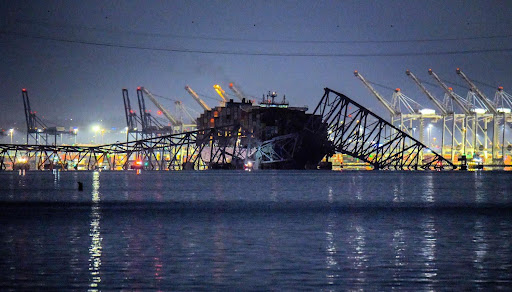-By Ofer Zeevy–
“Rebuilding that bridge will “not be quick” and will be costly,” claimed USA Transportation Secretary Pete Buttigieg, a former naval officer.
But in the aftermath of the Baltimore container ship’s deadly collision with the Key Bridge and the complete closure of the Baltimore port, the shipping industry faces further worries.
Many within the freight forwarding community are still trying to assess the numerous damages and delays caused by the disaster.
Dealing with a freight crisis is nothing new. Freight forwarders are still dealing with headaches such as the Global disruptions caused by the Panama Canal drought or the impacts of the Red Sea shipping crisis, to name just two.
The shutting down of the Baltimore port and the collapse of the Key Bridge mean that all kinds of goods need to find alternative routes to maintain their supply chain progress and delivery.
Freight forwarders may want to consider the following takeaways when trying to handle a crisis better and when having to deal with such uncertainty and sudden change:
Rapid route assessment
By utilizing a digital supply chain management platform, a freight forwarder can immediately identify affected routes and quickly explore alternative shipping options for clients, ensuring continuity in shipping operations. Finding new routes is relevant for both outgoing and incoming shipments.
Client consultation
A freight forwarder can then promptly engage clients to understand their preferences and concerns, assuring them of proactive efforts to resolve the crisis.
Alternative solutions
Digital platforms enable forwarders to generate alternative routes and pricing quickly. By comparing offers, they can provide clients with viable options while maintaining transparency and trust.
Continuous communication
Dealing with a stressful and uncertain situation calls for constant freight forwarder-client communication. Once freight forwarders issue a new quote, they need to contact their clients again, find out if they are satisfied with the alternative, and show them that the entire shipping situation is under control.
Sometimes, further consultation is required since the client may change his requirements and wants for the shipment. Since the new and alternative routes may call for a longer delivery time and higher fees, communicating the offer would be better through a face-to-face, Zoom, or phone conversation.
Wisor AI's digital platform can help freight forwarders better handle crises!
In times of crisis, when freight forwarders seek quick alternatives and effective communication with clients is advised, they can use Wisor AI’s supply chain management platform.
By employing a digital freight management platform, forwarders can immediately track all carriers stuck in the crisis area, consult with their clients about the situation, and quickly develop alternative routes and price solutions.
Book a demo and witness how Wisor AI can bolster your crisis readiness!
Visit us here: https://wisor.ai/
